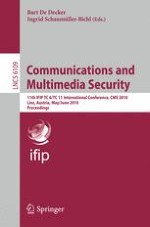Over the last decade, we have witnessed a growing dependency on information technologyresultingina wide rangeofnew opportunities. Clearly,ithas become almost impossible to imagine life without a personal computer or laptop, or without a cell phone. Social network sites (SNS) are competing with face-- face encounters and may even oust them. Most SNS-adepts have hundreds of “friends”, happily sharing pictures and pro?les and endless chitchat. We are on the threshold of the Internet of Things, where every object will have its RFID-tag. This will not only e?ect companies, who will be able to optimize their production and delivery processes, but also end users, who will be able to enjoy many new applications, ranging from smart shopping, and smart fridges to geo-localized services. In the near future, elderly people will be able to stay longer at home due to clever health monitoring systems. The sky seems to be the limit! However, we have also seen the other side of the coin: viruses, Trojan horses, breaches of privacy, identity theft, and other security threats. Our real and virtual worlds are becoming increasingly vulnerable to attack. In order to encouragesecurity researchby both academia and industry and to stimulate the dissemination of results, conferences need to be organized. With the 11th edition of the joint IFIP TC-6 TC-11 Conference on C- munications and Multimedia Security (CMS 2010), the organizers resumed the tradition of previous CMS conferences after a three-year recess.
